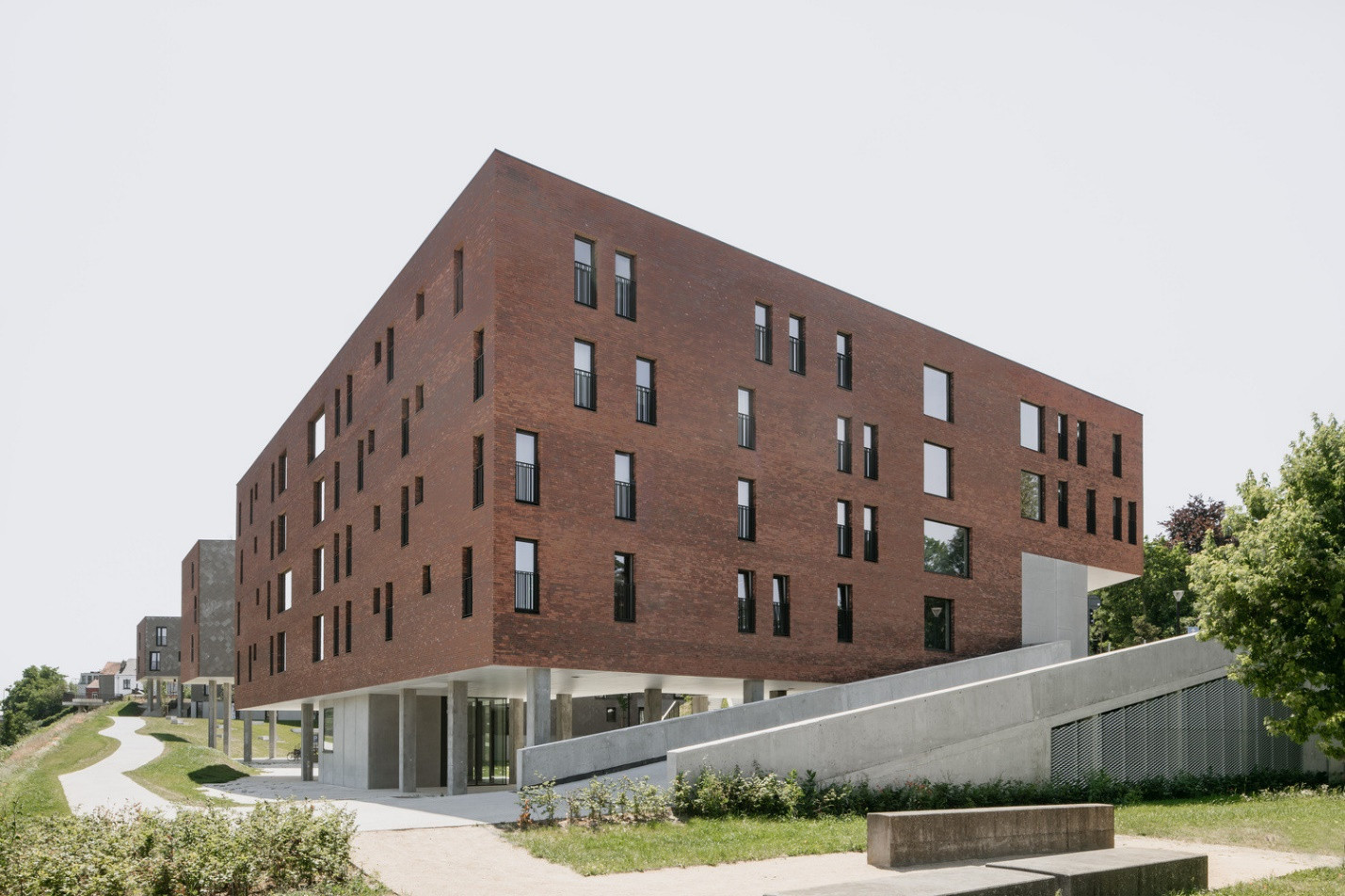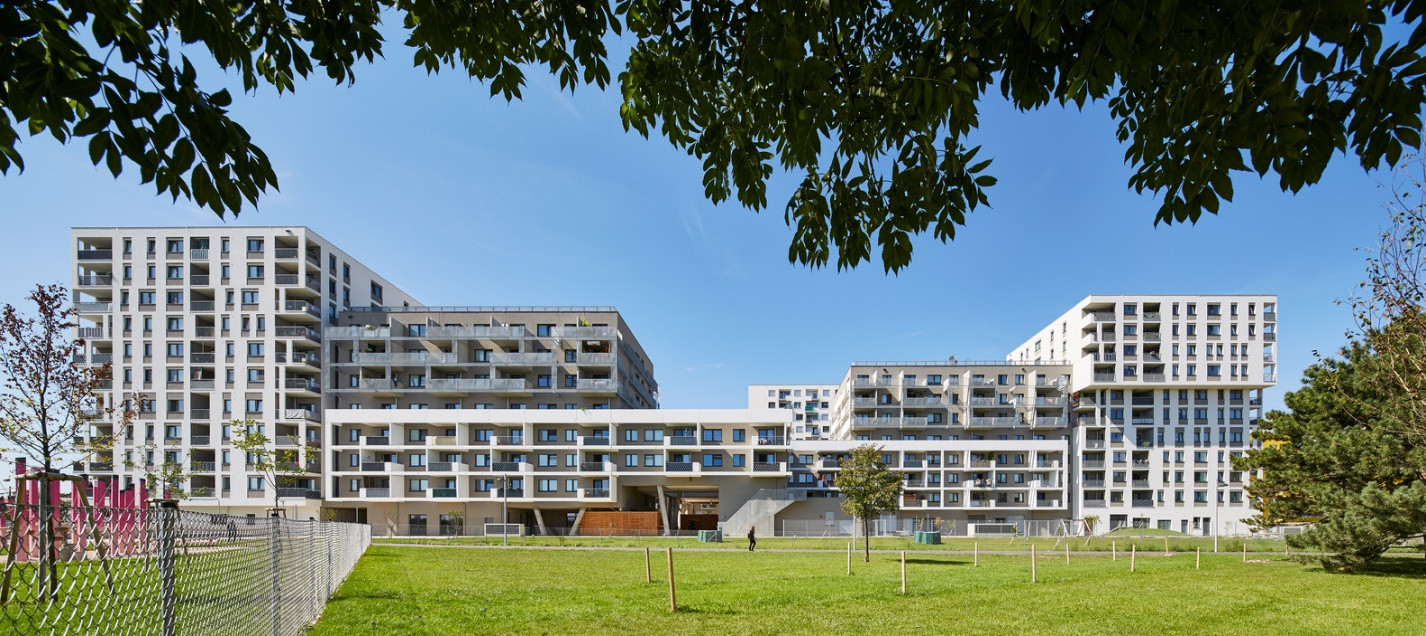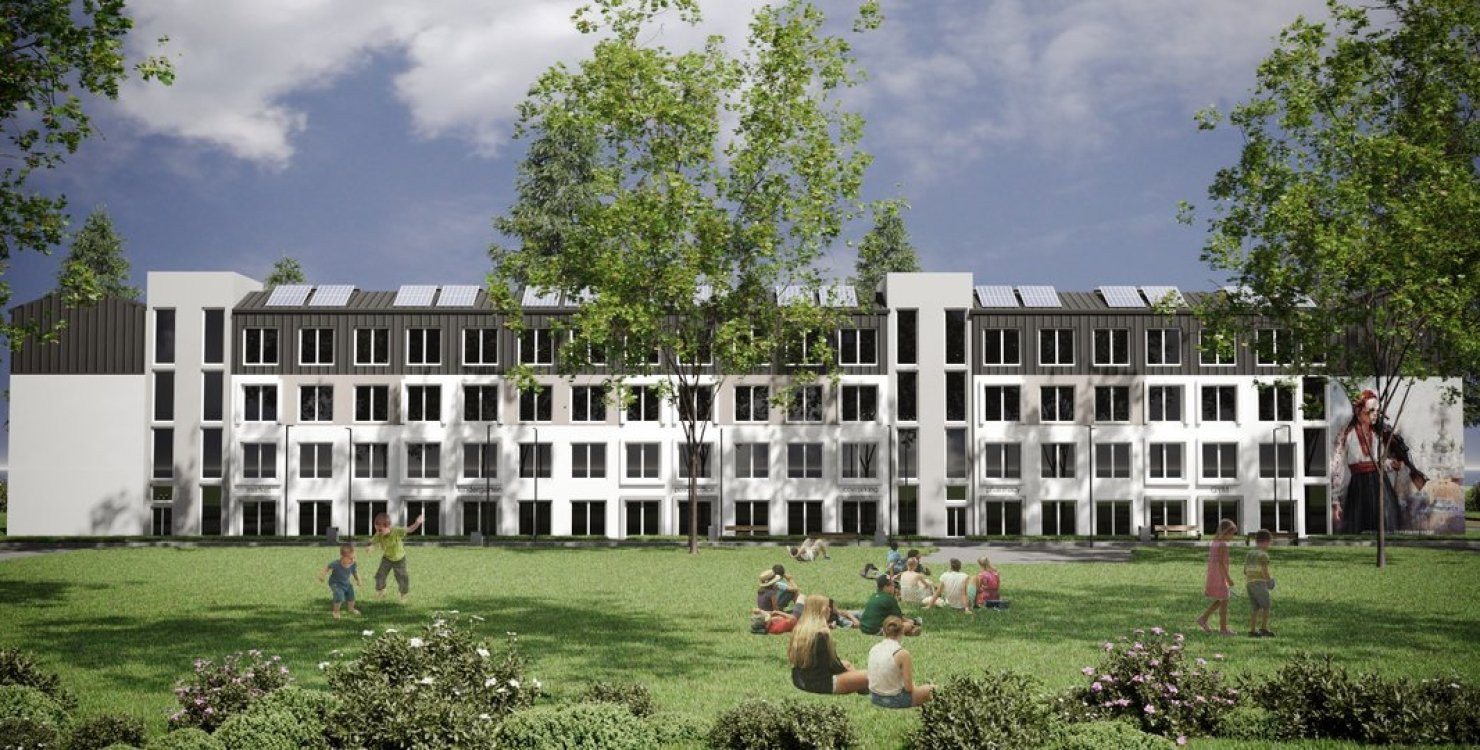Russia's full-scale invasion has shown how vulnerable our country's housing system is. In the process of massive displacement of people, it turned out that communities critically lacked housing for resettlement. And while the idea of affordable social and temporary housing is being actively promoted in the world, in Ukraine, schools, gyms, and cultural centers are sometimes used as shelters.
The Transparent Cities program team has studied why it is important to invest in social housing development now, and how international experience can help overcome the housing crisis.
What is social housing?
It is a state-owned housing asset that is leased at an affordable price. Any person in need of social support from the state can apply for such housing.
The rental price can be tied to various indicators, such as the applicant's income, the average market rent, as well as the characteristics of the housing, and the cost of its maintenance. The peculiarity of social housing is that it is not subject to privatization (as it was after the collapse of the USSR), sale, or pledge by the lessee. And the terms of use are clearly stated in the contract.
Historically, mass social housing appeared in the late nineteenth century in Europe to address acute social problems. The construction boom came at the end of World War II as a response to the global housing crisis.

One of the world's oldest social housing complexes in Augsburg, Germany, 1928. Photo: Getty Images
The main form of social housing in postwar Europe was a long-term rental at an affordable price. Special “waiting lists” were formed for families, similar to the housing waiting lists in the post-Soviet space. With many variations, this form of relationship is still relevant in different countries.
How does it work in the world today?
After World War II, the massive construction of social housing helped provide many people with low-cost housing and stimulate postwar recovery. It also had an impact on combating the effects of urbanization, the spread of crime, and various diseases.
Today, social housing is a traditional way for many countries to meet the housing needs of low-income people. It is simultaneously aimed at solving various social problems: from combating homelessness to reducing property inequality.
 In particular, this area is well developed in the world through non-profit rental mechanisms. For example, in Hungary, the Netherlands, Finland, and the United Kingdom, the social housing rental sector accounts for more than 50% of all rental housing. In large cities, this share is even higher.
In particular, this area is well developed in the world through non-profit rental mechanisms. For example, in Hungary, the Netherlands, Finland, and the United Kingdom, the social housing rental sector accounts for more than 50% of all rental housing. In large cities, this share is even higher.
 Social housing in Leuven, Belgium. Photo: Jeroen Verrecht
Social housing in Leuven, Belgium. Photo: Jeroen Verrecht
Vienna is one of the most developed European capitals in the field of social housing. Not only vulnerable categories of the population but also people with high incomes can apply for housing here. At the same time, the rental price may vary depending on the lessee's income. New residential complexes are being actively built in the city at public expense, and social housing is rented by various organizations: private providers, housing cooperatives, and municipal enterprises. Lease contracts are mostly long-term, and the housing itself can be privatized only at market price.
 Social housing in Vienna, Austria. Photo: Manfred Seidl
Social housing in Vienna, Austria. Photo: Manfred Seidl
In addition to state institutions and local authorities, social housing is often managed by non-profit rental agencies, housing associations, or profit-making agencies that are reimbursed by the state for affordable rents. Private construction and development companies are also involved in the creation of social housing.
In general, the social housing sector operates according to market logic and is therefore profitable for business. Municipalities make efficient use of their assets: for example, they buy real estate from private companies, pledge land to a bank, privatize housing, and use the proceeds to buy new facilities.
In addition, the construction of social housing has a multiplier effect on the economy, i.e., it stimulates the market for construction and building materials, creates jobs, etc. For example, the Affordable Housing Initiative in New York City created about 330,000 new jobs in 2011-2015.
In the European Union, the development of social housing facilities is actively supported. For example, the European Investment Bank allocates funds for the thermal modernization of buildings and lending to non-profit rental agencies. Funds are also allocated under the European Green Deal, Cohesion and Regional Policy Funds, and the EU's investment policy.
Prospects for the development of social housing in Ukraine
Fixing the housing situation in the short term is extremely difficult. European social housing is the result of long-term and consistent policies that have been implemented over the years. In contrast, in Ukraine, the amount of social housing is low and the sector has been critically underfunded for years.
Russia's invasion of Ukraine has exacerbated the need to reform the housing sector. Millions of people who have moved in search of a safer place have found refuge in premises that do not have adequate housing.
The situation is exacerbated by the government's previous policy of encouraging private ownership. Housing inherited from the Soviet Union was privatized in the 1990s. For years, housing policies have been limited to the direct transfer of apartments to new owners, mortgage coverage, or partial reimbursement of the price. Most state and municipal programs were aimed at subsidizing ownership rather than affordable rent.
However, Ukraine now has opportunities to increase the volume of social housing, at least for the most vulnerable categories of citizens, such as those who lost their homes as a result of the russian invasion.
Public-private partnership projects in the field of social housing are already emerging. For example, the Hope UA charitable foundation is looking for investors to finance a social housing project in Lviv Oblast, and the state is allocating land plots for construction. In Ivano-Frankivsk Oblast, a social housing neighborhood for IDPs is planned to be built jointly with international partners.
 Social housing project in Lviv region / Photo: Hope UA
Social housing project in Lviv region / Photo: Hope UA
Property confiscated from russian and belarusian citizens and collaborators can also be a source of social housing. A significant amount of abandoned and ownerless housing stock can be modernized and transferred to the appropriate funds to meet the housing needs. Funds from international technical assistance and development agencies can also be used to build social housing.
Such steps are justified, as housing is one of the key needs of IDPs, according to a survey by the UN International Organization for Migration. Despite the diversity of possible sources of revenue, the construction and purchase of social housing should be based on a change in approaches to housing policy. Existing housing programs need to be revised and housing stocks need to be replenished from state and municipal budgets.
The construction of social housing should become a component of a comprehensive fair housing policy, the formation of transparent markets, affordable housing, and sustainable urban communities. This will also include measures aimed at bringing the rental housing market out of the shadows, reforming housing taxation, changing general approaches to urban planning and geospatial development, and adapting to climate challenges.
Today, Ukraine has every chance to build a more effective and fair housing policy, considering the best practices of European countries.